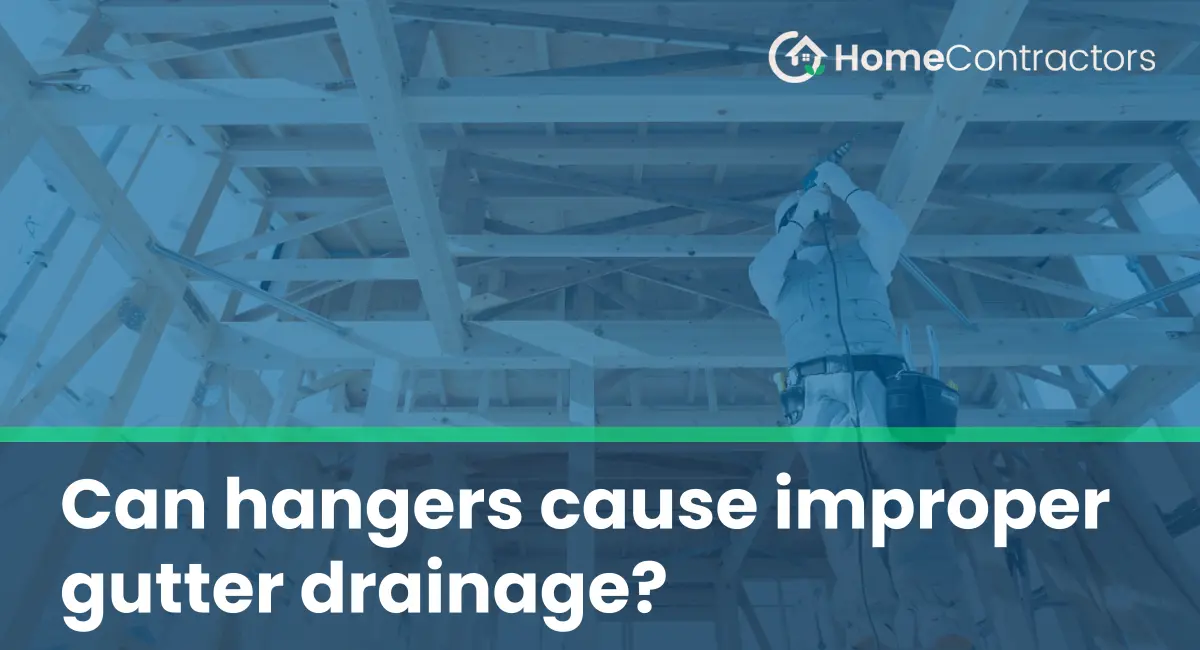Gutters play a crucial role in protecting our homes from water damage by redirecting rainwater away from the roof and foundation. To ensure their proper functioning, several factors must be taken into consideration, including the installation of gutter hangers. This article explores the possibility of hangers causing improper gutter drainage and addresses associated concerns.
Understanding Gutter Hangers:
Gutter hangers are the brackets or clips that are used to attach gutters to the fascia or the eaves of a home. They provide structural support and help maintain the proper alignment and slope required for efficient drainage. Hangers are available in various types, such as spike and ferrule hangers, strap hangers, and hidden hangers, each with its unique installation method and benefits.
Potential Causes of Improper Gutter Drainage:
While gutter hangers are typically designed to facilitate proper drainage, certain factors can lead to their failure and subsequently impact the overall performance of the gutter system:
1. Insufficient Hanger Spacing:
Improper spacing between gutter hangers can strain the gutter, causing it to sag or pull away from the fascia. When this happens, water accumulation and inefficient drainage become a concern. It is vital to follow recommended hanger spacing guidelines, typically one hanger every 24 to 36 inches, to maintain gutter integrity and prevent drainage issues.
2. Incorrect Hanger Type:
Choosing the wrong type of hanger for your specific gutter system can contribute to improper drainage. For instance, using spike and ferrule hangers on heavy-duty gutters may result in inadequate support, leading to sagging or misalignment. Selecting the appropriate hanger type based on the gutter material, weight, and anticipated load can help ensure proper drainage.
3. Inadequate Hanger Installation:
Improper installation of gutter hangers can compromise their effectiveness. If hangers are not securely attached to the fascia or the eaves, they may loosen or detach over time, causing the gutters to become misaligned and impede drainage. Proper installation techniques, such as using appropriate fasteners, can help prevent these issues.
Prevention and Maintenance:
To ensure optimal gutter drainage and avoid potential problems associated with hangers, it is crucial to prioritize preventative measures and routine maintenance. Consider the following steps:
1. Regular Inspection:
Perform routine visual inspections to check for signs of sagging, misalignment, or detachment of gutters from hangers. Addressing any issues promptly can prevent further damage.
2. Clean Gutters:
Regularly remove debris such as leaves, twigs, and other obstructions from gutters to prevent clogs and ensure proper water flow. This will reduce the strain on hangers and mitigate drainage problems.
3. Reinforce Hangers:
In areas prone to heavy rainfall or strong winds, reinforce gutter hangers with additional supports. This added stability can counteract the strain and prevent improper drainage caused by excessive water or weather conditions.
While gutter hangers are crucial for maintaining proper alignment and slope, it is essential to acknowledge their potential to cause improper drainage when not installed or maintained correctly. By selecting the appropriate hanger type, ensuring proper spacing, and conducting regular maintenance, homeowners can prevent drainage issues and protect their homes from water damage. Regular inspections and proactive measures will go a long way in ensuring the longevity and efficiency of the entire gutter system.
